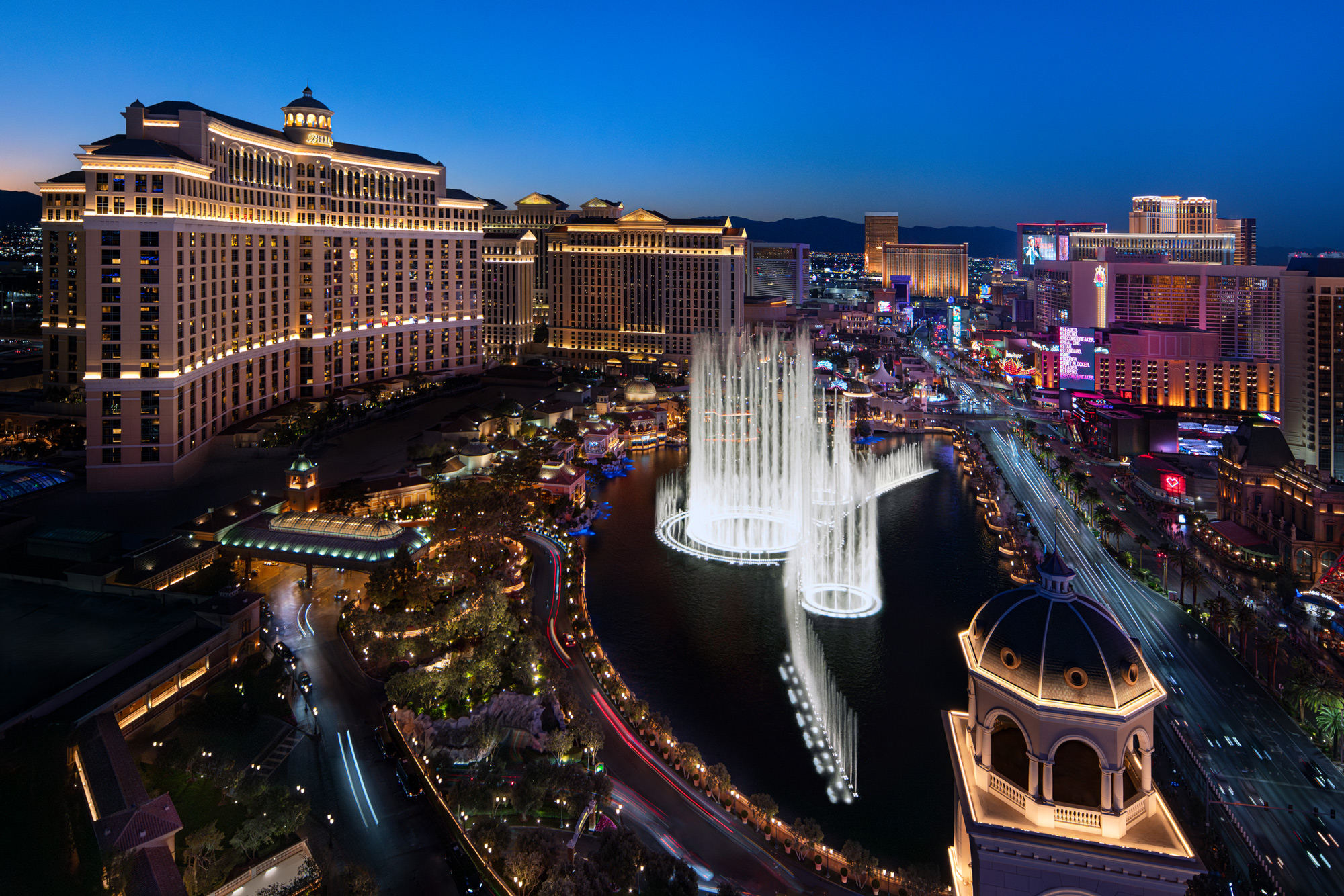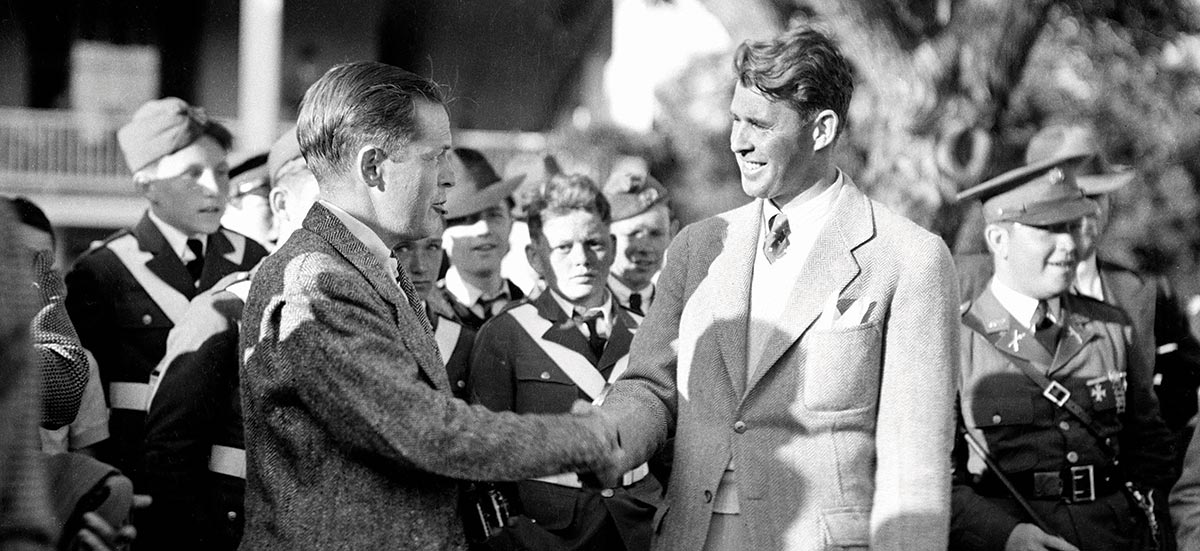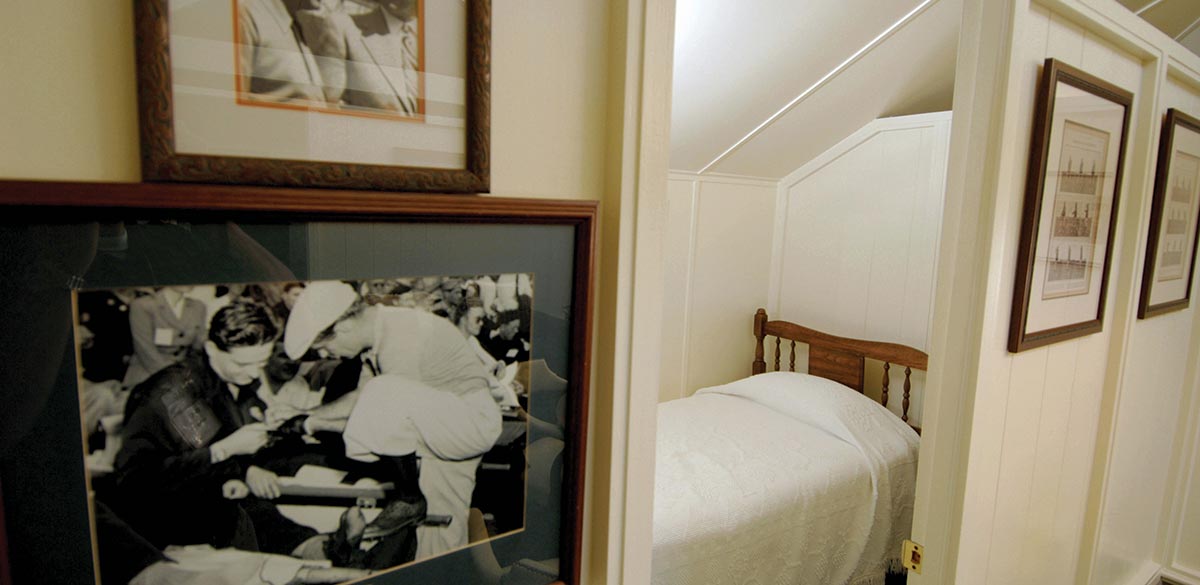
If walls could talk, Augusta National’s clubhouse could script an epic movie. Robin Barwick charts the history of the most famous clubhouse in American golf
In the middle of the 19th century, businessman Dennis Redmond developed a nursery and fruit farm called Fruitland on the fertile ground of a 400-acre property in the northern reaches of Augusta in eastern Georgia. Just a mile further east as the crow flies is the Savannah River, serving as the border between Georgia and South Carolina.
It has been regularly and mistakenly reported that Redmond established an indigo plantation on his property. Indigo was big business in the South at this time as it provided the dye to color denim, or the “Devil’s Blue Dye”, as the crops were often operated with slave labor. But research carried out by the University of Virginia shows Redmond not to have been a plantation owner at all.
In 1857, Redmond completed the construction of an innovative and impressive, 14-room manor house on the top of the hill on his estate. The late Charles Price, who authored ‘A Golf Story’—on Bobby Jones and the evolution of Augusta National—wrote that the house became a point of local interest:
“The Manor had a degree of fame in the area for the stately simplicity of its architecture and the historical significance of having been the first house in the South to be constructed of ‘artificial rock’ or what would become known as concrete.”
In 1858, 160 years ago yet just a year after finishing construction of the house—and three years before the beginning of the Civil War—Belgian baron Louis Mathieu Berckmans bought the property and collaborated with his son Prosper to develop Fruitland Nurseries. The nurseries lived up to the name of the younger Berckmans and as well as producing a broad variety of fruit, and peaches in particular, Fruitland became renowned in the South for its azaleas. The Berckmans lined the 300-yard carriage path up to the front of the Manor with orderly rows of magnolia trees. Berckmans’ magnolias, which provide a shady canopy over what has become known as Magnolia Lane, have flourished in the century that has followed their tenure.
The Berckmans clan moved away from Augusta after the death of Prosper in 1910, and after a failed attempt by a Florida developer to build a hotel there, the property was left unoccupied until 1931, almost two years after the Wall Street Crash. Wrote Price:
“On July 15 [1931], the [Augusta] Chronicle carried its largest headline since the Armistice of 1918: BOBBY JONES TO BUILD HIS IDEAL GOLF COURSE ON BERCKMANS’ PLACE.”

Jones described the Manor as “charming” when he first visited although it had fallen into a state of disrepair, with cracks in the 18-inch concrete walls—the result of an earthquake in 1886.
Ultimately, the Manor was well positioned for the golf course conceived by Jones and designer Alister Mackenzie, and Jones, a man with keen appreciation for history, wanted it to serve as the hub of the new golf club. So the original Manor survives to this day as the clubhouse of Augusta National, and it is a silver model of the original Manor that sits upon the Masters Tournament trophy.
It was not until 1938, four years after the inaugural ‘Augusta National Invitation’, that the old Manor was fully restored and renovated to serve the golf club. The cost of renovations far outweighed the expense of razing the Manor to the ground and building a clubhouse from scratch, illustrating an enduring philosophy at Augusta National to value its heritage, and also not to let budget considerations restrict development.
The original three-story manor house has been extended over the years, with a short walkway today linking the main building to the Men’s Grill and locker room to the west, with the pro shop and bag room further down the slope, parallel to the start of the first fairway.

The cozy Library on the second floor of the clubhouse is used as a members’ dining room, leading out to an idyllic verandah that is touching distance from the famous and ancient, sprawling oak tree behind the clubhouse. Beneath the shady boughs of this tree is the famous meeting area for media, golfers, members and their guests during Masters week, and the Library’s verandah is the perfect spot to soak up the Augusta atmosphere, whether during Masters week or any other time of year, as it must also have been 160 years ago.
On the Tuesday evening preceding every Masters Tournament the Library receives undoubtedly the most famous annual meal in golf, the Champions’ Dinner. To get an invitation it is straightforward: either win the Masters or become chairman of Augusta National. No one else gets a seat, without exception.
The Library is decked with bookshelves and display cabinets devoted to Jones, his co-founder Clifford Roberts and President Dwight D. Eisenhower, who was a committed and popular member despite his lousy golf. The Library door is adorned with the Augusta National crest at about waist height, and as Jim Hawkins recalls in his book, ‘Tales from Augusta’, Sam Snead—the Masters champion three times, (1949, 1952 and 1954)—devoted particular attention to the crest. As a man never slow to remind people how limber he remained into his senior years, the late Snead would kick the crest as he entered the Library for the Champions’ Dinner, and the ritual became a Champions’ Dinner tradition. Writes Hawkins:
“Without warning one year, Snead walked through the door and announced: ‘The old man can’t do it anymore.’
Fitness fanatic Gary Player groaned, ‘Man, I never thought I’d see the day when the great Sambo couldn’t kick that door seal.’
Immediately, Arnold Palmer challenged Player. ‘I’ll bet $100 he can kick it if he tries,’ Palmer said.
Snead, who long ago had earned a reputation as quite a hustler, walked out of the room, came in again and kicked the seal, just as he had always done. Reportedly, Palmer and Snead then split Player’s $100.”
Also on the second floor of the clubhouse, behind a large oak door opposite the Library, is the Champions’ Locker Room, and like the Champions’ Dinner, only past champions are permitted entry (and their guests). While the media at the Masters are allowed access to the main locker room downstairs, the Champions’ Locker Room remains ‘OB’.
As part of what was the original Manor, the Champions’ Locker Room is not as spacious as you might imagine, to the extent that Masters winners share lockers, as allocated by the club. On arriving at Augusta for their spring tradition, past winners enter the Champions Locker Room to find their Green Jackets hanging up, ready and waiting (one of Augusta’s many rules is that Green Jackets may only be worn at Augusta National, apart from by the reigning champion, who is entitled to wear the jacket away from the club until the following year’s Masters).
The Champions’ Locker Room leads out to the verandah at the front of the clubhouse, squarely behind Magnolia Lane, and despite its position right at the center of Augusta National, it remains a welcome, calm haven—and largely out of view—for the past champs.
“I love going back to Augusta National each year,” says Germany’s Bernhard Langer, Masters champion in 1985 and 1993 and now the man to beat on the PGA Tour Champions. “I have a lot of memories from Augusta, and it is a unique place. Being able to go into the Champions’ Locker Room, and up to the Champions’ Dinner on the Tuesday evening, show some friends around, share some stories, it’s amazing.”


Along the way, obscurely through a door marked ‘Telephone’, down a modest corridor, through another, smaller side-door and up a narrow staircase is the Crow’s Nest. The Augusta clubhouse is not fitted with convenient directional signs like the Holiday Inn up the road, so a newcomer would struggle to find it.
This third-floor accommodation is reserved for use by amateur golfers competing in the Masters. Jack Nicklaus, Tom Watson, Phil Mickelson and Tiger Woods are among the golfers who have stayed in the Crows’ Nest, so staying there comes with compelling omens.
“It’s the one room, the one spot at Augusta National that is off-limits to everybody but the amateurs,” American PGA Tour player Brandt Snedeker told Golf Digest magazine, having stayed in the Crow’s Nest in 2004. “It’s our escape.”
The Crow’s Nest is a modest suite of four ‘rooms’ behind partitions, all off a central living room, and there is a single shared bathroom. It has the feel of a college dorm, but without the beer stains. Like the golf course, the floor of the Crow’s Nest is green (carpet) and the walls, ceilings and window frames are white.
Legend has it that a young and brazen Ben Crenshaw ventured out of the Crow’s Nest and onto the main roof of the clubhouse on the Thursday morning to watch the honorary starters, wearing just his underwear. A 20-year-old Phil Mickelson snuck out one night just to stand alone on the 18th green, letting his imagination run wild. “There in the pitch black,” he once said, “dreaming about one day winning the Masters on that green.” Some dreams are crazier than others.
The walls of the Crow’s nest are decorated with black and white photographs of Masters players: among them is Palmer in his prime, but bigger than the others is one of Jones from 1930—the finest amateur in golf’s history.
Jones, who died in 1971, would be proud of how Augusta National has preserved the clubhouse that he spared from demolition in the 1930s, and no doubt Berckmans before him, and Redmond before Berckmans, would share the sentiment.
Follow Us On


| Cookie | Duration | Description |
|---|---|---|
| cookielawinfo-checkbox-analytics | 11 months | This cookie is set by GDPR Cookie Consent plugin. The cookie is used to store the user consent for the cookies in the category "Analytics". |
| cookielawinfo-checkbox-functional | 11 months | The cookie is set by GDPR cookie consent to record the user consent for the cookies in the category "Functional". |
| cookielawinfo-checkbox-necessary | 11 months | This cookie is set by GDPR Cookie Consent plugin. The cookies is used to store the user consent for the cookies in the category "Necessary". |
| cookielawinfo-checkbox-others | 11 months | This cookie is set by GDPR Cookie Consent plugin. The cookie is used to store the user consent for the cookies in the category "Other. |
| cookielawinfo-checkbox-performance | 11 months | This cookie is set by GDPR Cookie Consent plugin. The cookie is used to store the user consent for the cookies in the category "Performance". |
| viewed_cookie_policy | 11 months | The cookie is set by the GDPR Cookie Consent plugin and is used to store whether or not user has consented to the use of cookies. It does not store any personal data. |